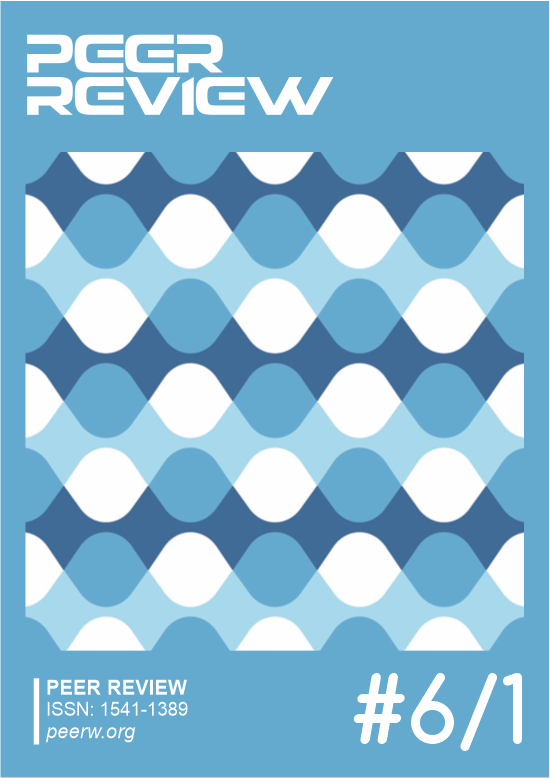Betting against beta para os mercados acionários da América Latina
DOI:
https://doi.org/10.53660/PRW-1686-3312Palavras-chave:
Bettng Against Beta, Mercados Acionários, América LatinaResumo
Estudos recentes sobre a eficiência do CAPM para prever retornos foram questionados por vários acadêmicos e umas das constatações foi que a inclinação da curva do SML na prática é menor do que o resultado teórico do CAPM. Isto implica em um portfólio comprado em ações de beta defensivo e vendido em ações de beta alavancado gerando retornos positivos. Os pesquisadores Frazzini e Pedersen (2013) acharam evidências disto por meio do modelo fatorial Betting against Beta (BAB), no qual eles aplicaram esta modelagem para 20 mercados internacionais de ações, mercados de títulos americanos de renda fixa e de crédito. O objetivo desta pesquisa é estender este estudo para os mercados acionários da América Latina como Brasil, México e Chile. O resultado obtido deste estudo mostra que os portfólios com beta maior apresentam alfas e índices de Sharpe menores quando comparados aos portfólios de beta menor, portanto resultados diferentes do modelo BAB para os mercados acionários internacionais.
Downloads
Referências
AGARWALLA, S. et al. Betting against beta in the Indian market. Indian institute of management Ahmedabad, 2014.
BHANDARI, L. C. Debt/Equity ratio and expected common stock returns: empirical evidence. Journal of finance, 1988. 507-528.
BLACK, F. Capital Market Equilibrium with restricted borrowing. The Journal of Business, Jul 1972. 444-455.
BLACK, F.; JENSEN, M. C.; SCHOLES, M. The capital asset pricing model: some emprical tests. Studies in the theory of capital markets, 1972. 79-121.
CARHART, M. On persistence in mutual fund performance. Journal of finance, 1997. 57-82.
CARPENTER, M. D.; UPTON, D. E. Trading volume and beta stability. Journal of portfolio management, 1981. 60-64.
CHEN, S.-N. Beta nonstationarity, portfolio residual risk, and diversification. Journal of financial and quantitative analysis, 1981. 95-111.
DAMODARAM, A. Investment Valuation, 2012. Chapter 7 - Riskless rates and risk premiums.
DAMODARAN, A. Damodaran Online. Disponivel em: <http://pages.stern.nyu.edu/~adamodar/>. Acesso em: 20 fev 2020.
DOUGLAS, G. W. Risk in equity markets: An empirical appraisal of market efficiency. Yale economic essays, 1969. 3-48.
FAMA, E. F.; FRENCH, K. R. The crosssection of expected returns. Journal of Finance, 1992. 427-465.
FAMA, E. F.; FRENCH, K. R. Common risk factors in the returns on stocks and bonds. Journal of Financial Economics, 1993. 3-56.
FRAZZINI, A.; PEDERSEN, L. H. Betting against Beta. National Bureau of economic research, 10 mai 2013. 1-80.
GRUNDY, K.; MALKIEL, B. Reports of beta´s death have been greatly exaggerated. Journal of portfolio management, 1996. 36-44.
GUIMARÃES, F. G. Risco de Mercado. ABC do Dinheiro, 2014. Disponivel em: <http://www.abcdodinheiro.com.br/2014/09/risco-de-mercado.html>. Acesso em: 22 fev 2020.
IBBOTSON, R. G.; KAPLAN, P. D.; PETERSON, J. D. Estimates of small-stock betas are much too low. Journal of portfolio management, 1997. 104-111.
JAGANNATHAN, R.; MCGRATTAN, E. The CAPM debtate. Federal reserve Minneapolis , quartery review, 1995. 2-17.
JENSEN, M. C. The Performance of Mutual Funds in the Period 1945-1964. Journal of Finance, 23, n. 2, mai 1967. 389-416.
KOTHARI, S. P.; SHANKEN, J.; SLOAN, R. G. Another look at the cross section of expected stock returns. Journal of finance, 1995. 185-224.
KRAUS, A.; LITZENBERGER, R. Skewness preference and valuation of risky assets. Journal of finance, 1976. 1085-1094.
LIM, K.-G. A new test of the three moment capital asset pricing model. Journal of financial and quantitative analysis, 1989. 205-216.
MARKOWITZ, H. Portfolio Selection. The Journal of Finance 7, Mar 1952. 77-91.
NASCIMENTO, F. Betting against beta no mercado acionário brasileiro. São Paulo. 2017.
PASTOR, L.; STAMBAUGH, R. Liquidity risk and expected stock returns. Journal of political economy, 2003. 642-685.
REILLY, F. K.; BROWN, K. C. Investment Analysis & Portfolio Management. Mason: South Western, 2003.
RODNEY, L. et al. Further evidence on the stationarity of beta coefficients. Journal of Financial and Quantitative Analysis, March 1978. 117-121.
SEARS, S. R.; WEI, J. The structure of skewness preferences in asset pricing models with higher moments. Financial review, 1988. 25-38.
SHARPE, W. F.; COOPER, G. M. Risk return classes of New york stock exchange common stocks. Financial analysis journal, 1972. 46-54.
VAIDYA, D. What is the Security Market Line (SML). Wall Stret Mojo, 2018. Disponivel em: <https://www.wallstreetmojo.com/security-market-line/>. Acesso em: 22 fev 2020.
VASCIEK, O. A. A note on using crosssectional information in Bayesian estimation on security beta´s. Journal of Finance, 1973. 12331239.
VINEET. Capital Market Line. Back of the Envelope, 2016. Disponivel em: <https://vineetv.wordpress.com/tag/capital-market-line/>. Acesso em: 22 fev 2020.






